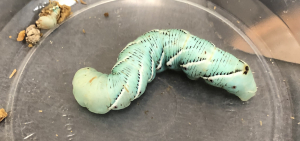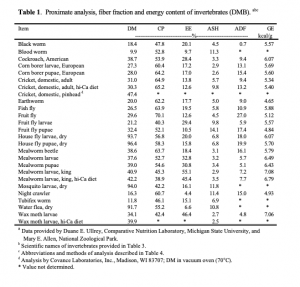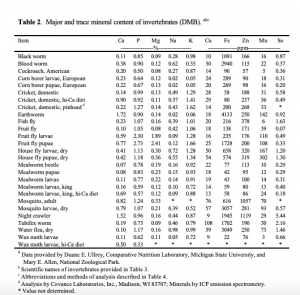
What the heck is that thing? You may have seen it in your backyard, crawling on your tomato plants. It’s a hornworm! Hornworms are high in protein and fat and we fed one to one of our beardies this past week. There’s a video at the end that shows her eating it and loving it!
So can you go out to your backyard and pick one to feed to your reptile? ABSOLUTELY NOT! Wild hornworms collect and store the toxin in the plants they feed on (tomatoes and tobacco) which makes them toxic if they are ingested by your pet.
But let’s back up a bit. This post is about what to feed your bearded dragon and what we feed our guys. Our bearded dragons are adults; adults are fed a primarily herbivorous diet while juveniles have more insects supplemented into their diet. Our beardies are fed ½ cup of leafy greens (kale, mustard greens, collard greens, or turnip greens) every single day. See below for a great video of our beardies enjoying their greens. https://youtu.be/Z7IDT0dDYJIWe also make sure our beardies get 1tbsp of veggies (carrots, peas, pepper, blueberries, squash, green beans, blackberries, and raspberries) on top of their greens and a sprinkle of calcium (1/8 tsp) on top of all of that.
As far as protein goes, we want to make sure that our adult beardies have only about 5% of their diet as protein. This means they get 2 kingworms twice a week. Kingworms have a crunchy exoskeleton and a soft, proteinaceous inside. How do you decide between different types of feeder insects for your reptile? See the chart below (reference at end of blog post)!
To make things a little clearer, DM stands for Dry Matter, CP is Crude Protein, EE is Either (crude fat), Ash is the total minerals present, ADF is Acid Detergent Fiber, and GE is Gross Energy. Do you want to feed your reptile something with high protein or high fat? It’s also extremely important to check with calcium: phosphorus ratio in each feeder insect. That is included in the following chart. The ideal ratio of calcium: phosphorus ratio is 2:1. The following chart (from the same source) includes the major and trace mineral content of invertebrate so you can compare calcium: phosphorus ratios.

Video of our beardie eating her hornworm!!
Chart 1 and 2 Reference: http://caudata.net/cc/pdfs/Nutritional_Aspects_insects.pdf
